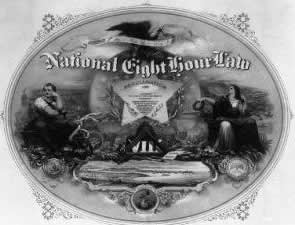When you worked for wages in the mid 19th century you didn't have much time for anything else. 12-hour days -- from sunrise to sunset -- were not unheard of but by the 1850s 10-hour days were the norm. Although Congress passed an eight hour law on June 25, 1868, it was largely ignored. However in the 1880s the issue was revived. Carpenter P.J. McGuire proposed a national campaign to establish the eight-hour-day and in 1886 the Federation of Organized Trades and Labor Unions resolved that "eight hours shall constitute a legal day's labor from and after May 1, 1886" and urged that "labor organizations . . . so direct their laws as to conform to this resolution."
